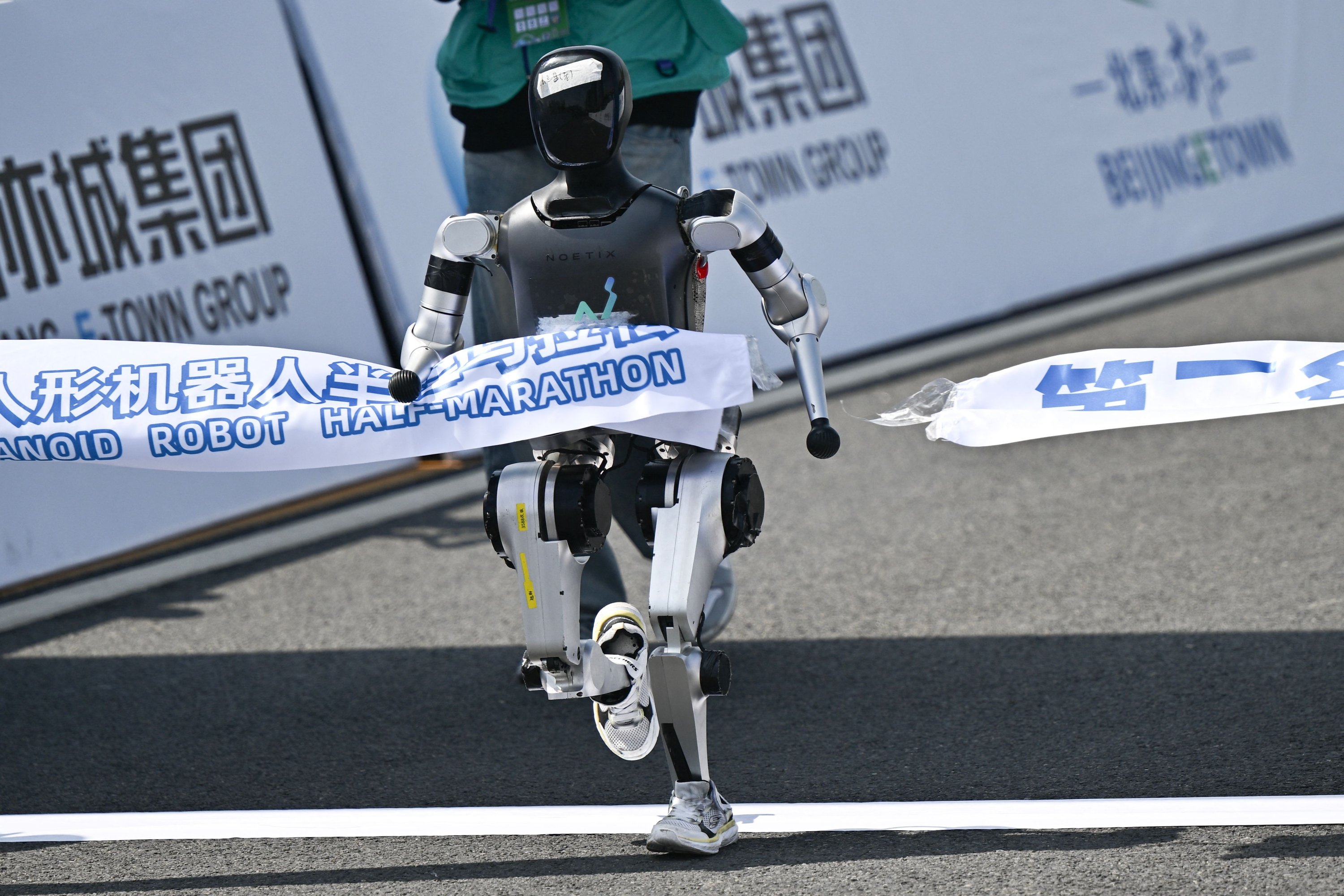In a futuristic twist on traditional athletics, humanoid robots ran to keep up with humans at what organizers called the world’s first half marathon in Beijing on Saturday. The 21-km course wound through the city's Yizhuang district, with more than 10,000 human participants and robotic contenders from 20 companies and research institutions. The robot Tiangong Ultra crossed the finish line in a little over 2 hours and 40 minutes.
Despite giving it all its circuits could handle, Tiangong Ultra was left in the dust by the fastest human finisher, who crossed the line in a brisk 1:11.07. Barriers separated the robots' running track from their human competitors.

Engineers were allowed to make adjustments to their high-tech protégés along the way with aid stations specifically for robots, although these interventions came with time penalties. Instead of water and snacks, the stations provided batteries and technical tools. The race was considered more of a technical demonstration, and no robot had a real chance of winning overall.
To qualify, robots had to meet certain criteria – most notably, they needed two legs. As seen in a broadcast on Chinese state television, some robots failed to take even a single step, while others shuffled so slowly that their engineers could casually walk behind them. So was this widely publicized event just all for show? "Events like this do test the practical capabilities of humanoids," said Maren Bennewitz, a robotics professor at the University of Bonn.
"It's not just about the hardware – the software must also allow the robot to perceive its environment and react accordingly, whether to the terrain or nearby competitors." But others see the race as largely symbolic. "In my opinion, the half marathon in Beijing is clearly a PR stunt to demonstrate China's technological excellence," said Daniel Rixen, professor of applied mechanics at the Technical University of Munich.
Rixen noted the hurdles of having humanoid robots complete a half marathon: they must be energy-efficient, robust, and capable of dynamically navigating a long course without toppling over. Precise motion planning and balance are critical. The race also carried geopolitical undertones.
It comes amid an ongoing technological rivalry between China and the United States, particularly in artificial intelligence and robotics. American companies such as Figure AI, Tesla, Agility Robotics, and Boston Dynamics are racing to develop advanced AI with lifelike movement and cognitive abilities. China, however, is determined to show it's pulling ahead.
"China has built up a technological lead in humanoids," Rixen said, crediting a fast-moving domestic industry capable of producing state-of-the-art robots at competitive costs. Beijing has made robotics a national priority. The development of advanced humanoids is now part of the government's 2025 policy agenda.
Earlier this year, the Chinese AI firm DeepSeek made headlines with a reported breakthrough in generative AI, drawing significant attention at home and abroad. At the National People's Congress in March, officials pledged more funding for future-focused technologies, including "embodied AI," a field that blends physical robotics with cognitive computing. Sate media routinely highlights robotic advancements, and the tech is on real-life display, too.
In one Beijing park, dog-like, four-legged patrol bots now assist police. Equipped with multispectral cameras and high-precision sensors, they represent "the latest innovation in Beijing's ongoing efforts to build a smart city," according to the state-run news agency Xinhua..
Business

Robots vs humans: Beijing hosts futuristic half marathon

In a futuristic twist on traditional athletics, humanoid robots ran to keep up with humans at what organizers called the world’s first half marathon in Beijing on Saturday.The 21...














